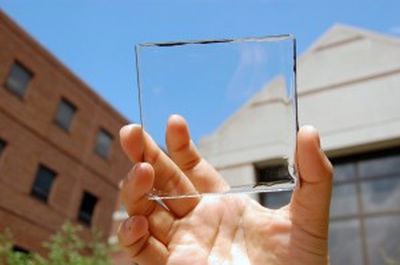 With all the hazardous health and environmental aspects of our current energy sources — like nuclear, coal, petroleum and natural gas — innovative and nontoxic alternatives are in high demand. Regrettably, even “green technology” has serious drawbacks, where windmills and solar farms decimate bird life, while dams for hydroelectricity disrupt waterway ecosystems. In an attempt to find a better solution, we’re often faced with significant (and destructive) consequences. And yet, a glimmer of hope is on the horizon with a state-of-the-art material developed at Michigan State University (MSU).
With all the hazardous health and environmental aspects of our current energy sources — like nuclear, coal, petroleum and natural gas — innovative and nontoxic alternatives are in high demand. Regrettably, even “green technology” has serious drawbacks, where windmills and solar farms decimate bird life, while dams for hydroelectricity disrupt waterway ecosystems. In an attempt to find a better solution, we’re often faced with significant (and destructive) consequences. And yet, a glimmer of hope is on the horizon with a state-of-the-art material developed at Michigan State University (MSU).
Luminescent solar concentrators are nothing new in the realm of solar energy. Focusing the sun’s rays onto a compact area, the effect is similar to using a magnifying glass for generating heat and fire. The technology doesn’t come without problems, however. Solar concentrators tend to be unattractive monstrosities that pose a threat to local bird wildlife. Efforts have been made to merge the concentrators with standard windows, but the end result compromised the transparency and color of the glass. In response, the quest for a completely clear material began.
Affordable and non-intrusive
According to Richard Lunt of MSU’s College of Engineering, his team has developed a truly transparent luminescent solar concentrator that “can be used on buildings, cell phones and any other device that has a clear surface.” The key word here is transparent.
In the past, solar cells placed around luminescent plastic-like materials yielded products that were inefficient and highly colored. As Lunt pointed out in a recent press release, “No one wants to sit behind colored glass. It makes for a very colorful environment, like working in a disco. We take an approach where we actually make the luminescent active layer itself transparent.”
The solar harvesting system uses specialized organic molecules that absorb invisible wavelengths of sunlight. Once these molecules pick up ultraviolet and near-infrared light, they “glow” at an infrared wavelength. This “glowing” light is guided to the border of the material where it’s converted into power by slender rows of photovoltaic solar cells.
“Because the materials do not absorb or emit light in the visible spectrum, they look exceptionally transparent to the human eye,” Lunt said.
Even though development is still in its early stages, the potential to scale production for commercial applications with an affordable price point looks promising. Lunt also notes that the material needs more work on its energy-producing capacity. Currently, the solar conversion efficiency is close to 1 percent, but the team aims to reach beyond 5 percent when fully optimized.
Despite the hurdles that need to be overcome, Lunt believes that the material “opens a lot of area to deploy solar energy in a non-intrusive way. It can be used on tall buildings with lots of windows or any kind of mobile device that demands high aesthetic quality like a phone or e-reader. Ultimately we want to make solar harvesting surfaces that you do not even know are there.”
Article Sources
- http://themindunleashed.org
- http://msutoday.msu.edu
- http://onlinelibrary.wiley.com
About the author: Carolanne enthusiastically believes if we want to see change in the world, we need to be the change. As a nutritionist, natural foods chef and wellness coach, Carolanne has encouraged others to embrace a healthy lifestyle of organic living, gratefulness and joyful orientation for over 13 years. Through her website Thrive-Living.net she looks forward to connecting with other like-minded people from around the world who share a similar vision. Follow Carolanne on Facebook, Twitter and Pinterest. Please note: this article by Carolanne Wright first appeared on Natural News.
